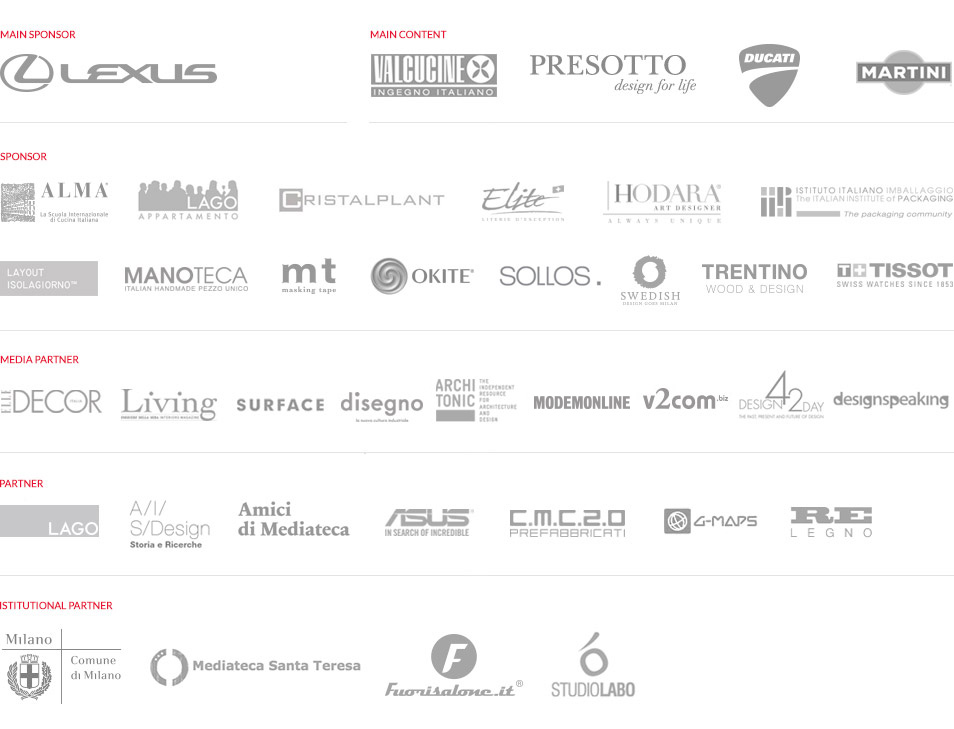Apparently the collection of silver pieces designed by Andrea Branzi and made by De Vecchi does not follow unforeseen, exhilarating paths, is not searching for "new" shapes, nor are production techniques called upon to find "new" ways to follow post-2000 design. What makes it interesting is the proposition applied by Branzi: the eternal condition of "things", where "things" does not mean narrating simply about objects of use, which these items actually are, but about elements - whether they are fragments of nature, theoretical places or meditative scenes - which convey thoughts and produce a tangible dignity. In this search for the eternal condition of things we must acknowledge a certain courage in design, which like the Nouvelle Vague brings out the "splendour of reality" through the elimination of the artificial. This in addition to the shared view of the world of design as a dialectically humanist sphere, which Dilmos has been able to cultivate in his long, happy activity.
These silver objects (vases, bowls, bases) are not a search for performance in craftsmanship, where De Vecchi holds the record (consider the work of Gabriele De Vecchi) but, like immobile monoliths of light, are "indifferent to the fragmentation of the world and knowledge, they are like macromolecules endowed with their own profound nucleus" (AB). They float moon-like, supported on plexiglass bases, which make them "less ecclesiastical and more pagan", applying the restraint and gentleness typical of the man to whom the collection is dedicated. A Milanese family, then, distinguished by the partnership between two Milanese entities - Dilmos and De Vecchi - whose historical-cultural roots are far apart but which at the same time are indispensable for design culture.
Opening hours Fuorisalone:
April 8/13 10.00 - 21.00
Opening April 8 at 18:00
Dilmos was founded in 1980 as an exhibition space for designer furniture.
The articles selected were intended to be the most representative examples of modern design, side by side with furniture made by firms representing the contemporary style of the eighties. There was also an area for holding exhibitions and the result was that Dilmos started interacting more directly with the world of design, personally choosing which designers to work with and their articles. This commitment was the fruit of a growing awareness of the value and poetical significance of objects: a profound interest that led Dilmos to deal essentially with articles distinguished by a strong communicative and narrative force. Since 1985, when an exhibition dedicated to Alessandro Mendini was held, Dilmos has increasingly tended to choose designers and articles that fully express a philosophy where each piece of furniture is a representation and at the same time a key to the designerÌs deeper thoughts, a way of communicating and interacting with the world. Hence an object that communicates and not merely functional but not just a symbolic object-subject, a mute emblem of our hyper-communicating society either: this is the aim of DilmosÌs research, which is constantly working, debating and striving to outdo itself. No uniform stylistic design can be seen in the articles found at Dilmos; the consistency cannot be seen in the designers whose work has been displayed over these years but rather in the interactions and the mutual desire to treat the articles animating a home or a space as elements that virtually receive its thoughts and, through their great narrative ability, transmit its poetry and intentions. The languages of the designers are therefore many, because the gestures and thoughts of each one are many, but that does not mean that they are incommunicable. This is the thinking behind some of Dilmos Ìs experiences while working to make it possible for languages and poetries to communicate with each other.
